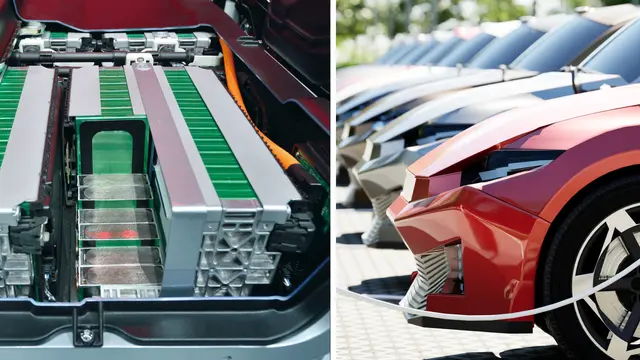
Researchers in Europe have developed a solid-state battery with increased energy density using a new method.
The battery is claimed to be suitable for modern lithium-ion battery production lines and offers 1,070 Wh/L energy density.
The prototype battery was developed by 14 European partners in the SOLiDIFY consortium.
Developed in the state-of-the-art battery lab of EnergyVille in Genk, Belgium, the battery achieved high energy density after combining a thick, high-energy-density cathode (NMC, containing nickel, manganese, and cobalt) separated from a thin lithium-metal anode by a thin solid electrolyte separator.
Manufacturing process requires room temperature
The manufacturing process requires room temperature and is adaptable to current lithium-ion battery production lines. Researchers claim that the method is expected to cost less than €150 per kWh.
The battery has an energy density of 1070 Wh/L, which is higher than the 800 Wh/L for today’s lithium-ion battery technologies.
The cost-effective method can lead to commercially viable solid-state lithium-metal batteries for electromobility.
Electrolyte changed phase from liquid to solid
Solvionic, a France-based tech company, developed the solid-state electrolyte, using a polymerized nanocomposite material based on an ionic liquid specifically for the prototype. The electrolyte changed phase from liquid to solid, allowing the application of thin electrolyte layers of 20 micrometers on 100-micrometer cathodes. This advancement enables the creation of compact battery cell stacks and higher volumetric energy densities, reported PV Magazine.
Solid-state batteries offer potential benefits such as higher energy density and reduced susceptibility to fires.
At the material level, the higher energy density of the cell results from the introduction of a thin lithium-metal anode together with a sufficiently thin solid electrolyte separator. However, developing a cost-effective architecture for their mass production has remained elusive.
This achievement was realized through careful evaluation and optimization of new materials and advanced coatings, provided by the partners. For the prototype’s electrolyte, a polymerized ionic liquid-based solid nanocomposite material was used, enabling a unique “liquid-to-solid” solidification approach for which Empa has filed a patent application.
The consortium also overcame mechanical strength and cathode impregnation challenges to increase the cell’s charge rate to 3 hours and lifetime to 100 cycles. Compared to other solid-state electrolytes, the thermally stable cell had a reduced flammability, improving safety. The application of nanometer-thin protective coatings enabled the use of cobalt-lean NMC cathodes, reducing environmental impact while providing higher capacity, according to Empa.





























